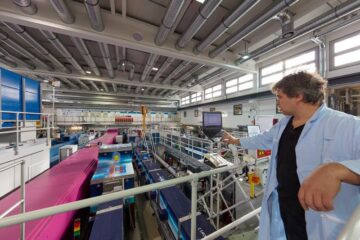Detection of Malicious Non-Executable Files Using Syntactic Structure

A major portion of threats against end-user systems arises from non-executable files, e.g., PDF documents or Flash animations. Such files may contain malicious executable content which is launched when a file is opened in a vulnerable viewer. Such attacks are hard to detect due to the high complexity of respective file formats. Conventional antivirus products often miss malicious content hidden in the rich syntactic structure of file formats.
A research group at the University of Tübingen developed a patent-pending technology: a highly performant static analysis tool for detection of malicious PDF documents. Instead of performing analysis of JavaScript or any other content for detection, the new developed method provides a reliable means for detection of malicious files by focusing precisely on structural artifacts arising from embedded malicious content. The research group could demonstrate its effectiveness on a dataset of about 500,000 real-world malicious and benign PDF files: the new method outperforms each of the 43 antiviruses at VirusTotal and other specialized detection methods. Additionally, the new method is almost completely immune to nearly worst-case attack scenarios.
Weitere Informationen: PDF
Eberhard Karls Universität Tübingen
Tel.: +49 (7071) 29-72639
Ansprechpartner
Dr. Rolf Hecker
Media Contact
Alle Nachrichten aus der Kategorie: Technologieangebote
Neueste Beiträge

Bakterien für klimaneutrale Chemikalien der Zukunft
Forschende an der ETH Zürich haben Bakterien im Labor so herangezüchtet, dass sie Methanol effizient verwerten können. Jetzt lässt sich der Stoffwechsel dieser Bakterien anzapfen, um wertvolle Produkte herzustellen, die…

Batterien: Heute die Materialien von morgen modellieren
Welche Faktoren bestimmen, wie schnell sich eine Batterie laden lässt? Dieser und weiteren Fragen gehen Forschende am Karlsruher Institut für Technologie (KIT) mit computergestützten Simulationen nach. Mikrostrukturmodelle tragen dazu bei,…

Porosität von Sedimentgestein mit Neutronen untersucht
Forschung am FRM II zu geologischen Lagerstätten. Dauerhafte unterirdische Lagerung von CO2 Poren so klein wie Bakterien Porenmessung mit Neutronen auf den Nanometer genau Ob Sedimentgesteine fossile Kohlenwasserstoffe speichern können…

















